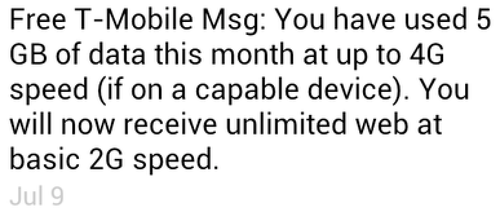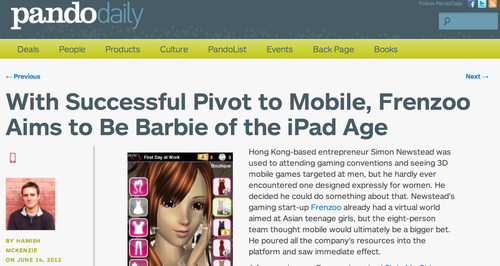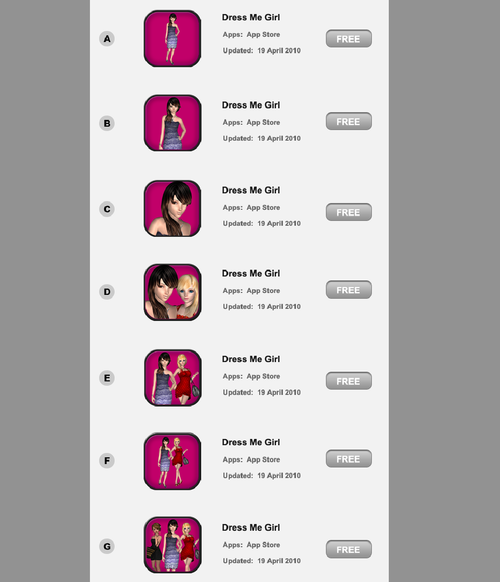I recently got this friendly text from T-Mobile:

Only slightly peeved, I called to ask what upgrade or top up I could get to restore my speed. I was told, being on the highest volume plan already, there was no option. I had to just bear 1990’s style internet access while waiting for the next billing month to start.
I was willing to pay, but there was nothing to spend on.
Quite peeved, this got me thinking back to a game design issue - how to fully meet demand from paying players. After all it’s normally easier to increase ARPPU than paid user conversion rate.
Take our title . The core puzzle mechanic with energy based currency earning requires serious patience or skill to finish the game for free.
So most players who reach into the end-game are paying. And the majority of who do finish the game enjoy it and want to keep playing:

What’s the solution we offer today?
Well you can go back and try and get 3 stars for all levels like in Angry…Amazing Alex.
Or just sit tight and wait until the new levels hit, whenever that is. Tomorrow or maybe in two weeks. Dear player, cool with that?
Oh hang on…. we’re guilty of… that makes us just like…. T-Mobile! *sob sob*

Drama aside, what are the sort of things that could help?
The good news is that there are LOTS of tactics in this sort of case. These include:
Some really interesting stuff here, I plan to dive into a handful of them in future posts as we design and roll them out.
Bottom line:
Whether you’re T-Mobile or Tiny-Startup, don’t leave money on the table.
How do you give paying players more to buy and enjoy? me or

For startups & game companies, it IS a war.
One fought with stock and salaries, massages and medical plans.
At an event in San Francisco last week, chat swung from banter to business when one of the group started an eager pitch to another, a talented game dev. The rest of us slunk away like friends leaving a flirting pair in privacy.

Back in Hong Kong it’s less crazy, but demand for quality talent still exceeds supply.
So how to compete?
Earlier we tried hiring an engineer position the time efficient (ahem…lazy) way - throwing up a vanilla job ad and waiting for CVs to roll in. We only received 8, none up to our standards.
Now with several to fill, fast, we resolved to do much more this time around.
Here are 10 tactics we used:
1. A fun referral program
We decided to slipstream off the recent Retina Macbook Pro launch by offering a new Retina iPad as thanks. It seemed to work, with several folks getting in touch and introducing their friends. We even had a random person coming to the office to drop a CV which was a first for us.

2. A personal email blast
To help spread the word, we pulled together a mass email to friends and connections we’d met. We started with a large list, filtering out those outside of Hong Kong (exporting from LinkedIn) and culling other game companies (no bad karma).

Whilst I couldn’t track open or click rates as I decided to use casual plaintext, the number of people who replied was over 15. So for a cost of around $5 it was a good investment.
3. Promote the jobs in-game

Having gained a nice global audience including Hong Kong, we decided to reach out . We have a dynamic welcome message that can be displayed on loading, and we coded it to display the referral program and contact email for those playing from Hong Kong. Sadly it was hard to tell the impact. In hindsight I should have put the call to action as a different address eg- to track the impact (note to self for next time).
4. Host and speak at events
One thing we’re doing more of in the last few months is having the team host and speak at more industry events (like held together with Unity3d at Cyberport). It’s good for the crew to hear from others and share our own learnings, and spread the word.
5. Targeted Facebook ads
Whilst the cost of posting a job on LinkedIn and Monster (not to mention a recruiter) would have been high, we found it more cost effective to do a targeted Facebook run. Of course the beauty of Facebook ads is the ability to hyper target based on location, demographics and interests. It’s something we’ve used a lot for different purposes in the past. Whilst the CTR is low as expected, having it in front of lots of relevant eyeballs helps in background brand building.

6. Give the company a face
A big draw for working at a startup is collaborating with a fun, smart team, unbound (hopefully!) from bureaucracy. A intro’d the awesome new folks joining the family and gave a sense of the vibe. This got good buzz out in the community…

7. Participate in Hackathons and Startup Contests
For programmers hands on events like hackjams and startups weekends are just a whole lot of fun and great chance to meet kindred spirits. Two of our team recently entered and won a Facebook hack day in Hong Kong. Working with an award winning team is one extra draw for potential recruits, and something we now highlight. How much does it help? Who knows but sure can’t hurt…

8. Get press
How to get press coverage? That’s another post which luckily my friends at Buffer have . You don’t need a million users to get that - it helps, but frankly not as much as an interesting story angle. Startups almost always have compelling tales and takes, so usually there is a pitch that can get coverage.

In our case we recently got coverage by several great . Doing PR costs less and only takes a few hours of creative thinking (more on that for another day)
9. Look at adjacent segments
If the need is niche and competition fierce, it may be better to look out to adjacent fields and skillsets. One of our shortlist game designer candidates ends up being someone from the fashion industry and she just loves playing all sort of social and mobile games. A reminder it always pays to…
10. …think outside the box!
Lately I’ve seen some great examples of startups thinking different in recruiting talent, from offering (expensive) through to (cheap).

You may not come up with something that makes the front page of Hacker News and a gazillion page views, but chances are just by making an attempt you’ll end up doing more than the other companies, which is half the battle.
And our result?
Going beyond the usual job ad generated more than 200% more candidates, at approximately 50% extra cost. Whilst it’s hard to isolate the impact of some of the tactics (mostly my bad!), all up it was worthwhile.
We’re able now to fill two of the three open positions. Still have to work hard to fill a final programmer position, but we’re in much better shape.
Lesson learned - when hiring, you usually get what you put in. Getting more creative and trying more things helped turn around our first failed attempt.
What tips do you have for hiring? me or
ps - for friends reading this in Hong Kong, and giving iPad’s for successful referrals… but you knew that already ;)
When I first of Greplin via a flurry of news from elite tech blogs, I fell in love.
Finally, a way to search all my stuff - Gmail, Google Docs, even Facebook in one single search - brilliant! And they were by Sequoia, generally a good sign.
The first weeks I used the service a lot but over time, less and less.
Why?
I found I didn’t need to use it that often, and when I did, I didn’t.
The handful of times I remembered to use Greplin though it worked pretty well.
In most cases though local and a search in one of the web services did the job. And in the rarer cases that didn’t work by habit I would go through them one by one until I found what I was looking for.
So in the end, something I thought would be a hit turned out the opposite.
What startup lessons am I taking away from Greplin’s ?
Goodbye Greplin, and wishing the best…
What lessons would you draw from this? me or
Your app icon is like a shop front, on a very busy retail street.
Warm and welcoming*, interesting and attractive and you’ll encourage people to wander inside and check it out Drab or shabby (drabby!) and few will bother to look.
* I mean seriously, who could resist that cute a baby ?
It’s clearly something people think is worth investing in. A co-founder of a top game company told me it took them 3 months to come up with the icon for one of their monster RPGs. For our first game we tested over 64 different versions on the way to identifying a winning .

One of the many tests we did over the course of several weeks
So how do you actually conduct an effective a/b test to come up with a great icon?
There are several ways - here are a few approaches in order of increasing accuracy.
1/ Good
One easy way to run a very fast and cheap test is to use a service like . They do simple A vs B tests, typically as a front end to a crowdsource platform like Amazon Mechanical Turk, where the participants are asked which they prefer.
Pros:
Cons:
2/ Better
Next up you can use a platform like . This let’s you deploy multiple versions in parallel out in front of many eyeballs and measure click through percentages.
Pros:
Cons:
3/ Best
The best way to test is to actually test with a real audience in the context they would discover your app once launched (ie ads and appstore charts). For iOS and Android this can mean ads on networks including AdMob, iAds, inMobi, Millenial Media etc You don’t want to use incentivized channels like offerwalls as they aren’t an accurate measure of actual self-generated user interest.
Beyond just clickthroughs, you can also measure true conversion to installs and app opening, by integrating the ad networks’ SDKs. Ie- do the players feel your game description and landing page reflects what they were interested in, which was the icon. (A whole another story on whether the game matches to what they expected when they installed)
What if you app isn’t already launched? Then you can setup a separate test account and run the ads to point there. Android is good that way. Also you can restrict the test app and campaign to certain geographies if you want to keep it fairly low key.
Pros:
Cons:
How do you come up with a great icon? Let me know by or